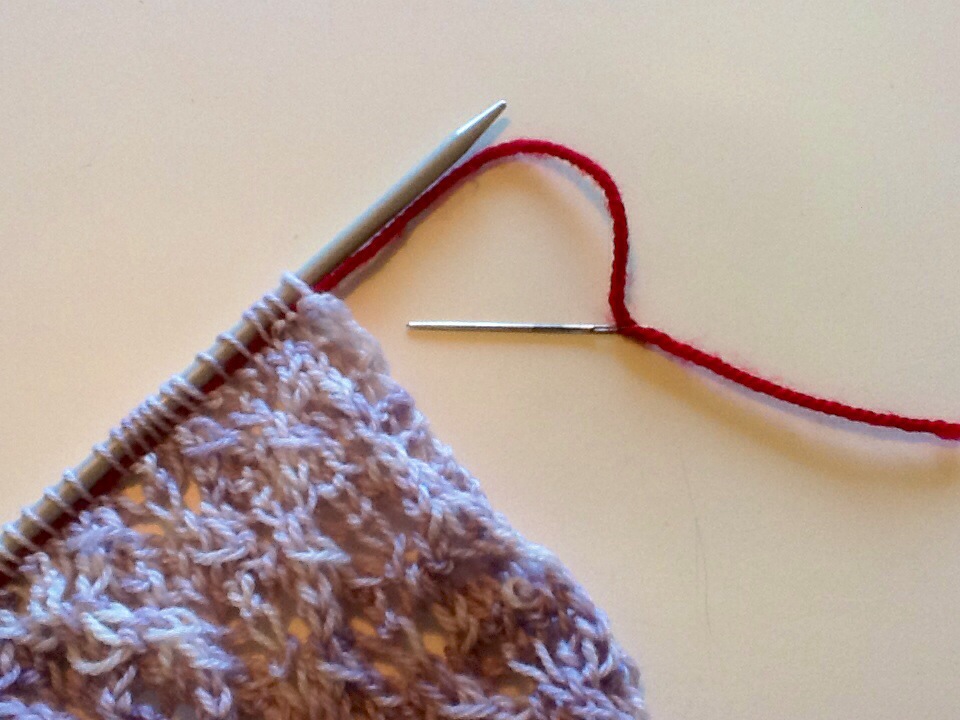Being able to reclaim work is very important as a writer and a crafter.
If you make a mistake in your knitting, you can tink - that is “knit” backwards. Basically you undo stitches one by one by reversing your actions to get back to a point in time. In tech writing terms, a bit like Ctrl+Z.
More drastically you can frog your knitting, which means you take the stitches off the needles and unravel big time, past the point of your mistake. Kind of like restoring from backup: you’re not really sure where you’re going to end up, and it’s probably further back than you’d like.
The most reliable way to recover from a mistake is to use a lifeline. A lifeline is a strand of yarn that you thread through the stitches on the needle and it acts as a place marker. You can confidently return to a known point in time and the stitches won’t unravel past your lifeline. This is as safe as source control.

Tech writing lifeline
Source control is a lifeline in tech writing.
In the lace knit scarf I’m working on, the pattern is made up of 8 repeated rows. Every time I reach a perfectly completed set of 8 rows, I move the lifeline up.
In writing, this is akin to using a source control system to regularly check-in files or label a version of completed work.
Just like the second cup of tea is never as good as the first, I can never quite recapture the perfection of a phrase I have written when I have to reconstruct it from memory.
With source control, you don’t have to recall artful phrases from memory or reconstruct lost work.
Know how it works
Most authoring tools these days integrate with source control software. I recommend that you become familiar with the nuts and bolts of how your source control system behaves.
- Where are the files actually stored?
- How does branching and versioning work?
- How can you retrieve an older version?
- Does it allow multiple checkouts of the same file? If so, test what happens upon checking-in.
Be aware of the flexibility and limitations of your source control software - it might just save your life.


